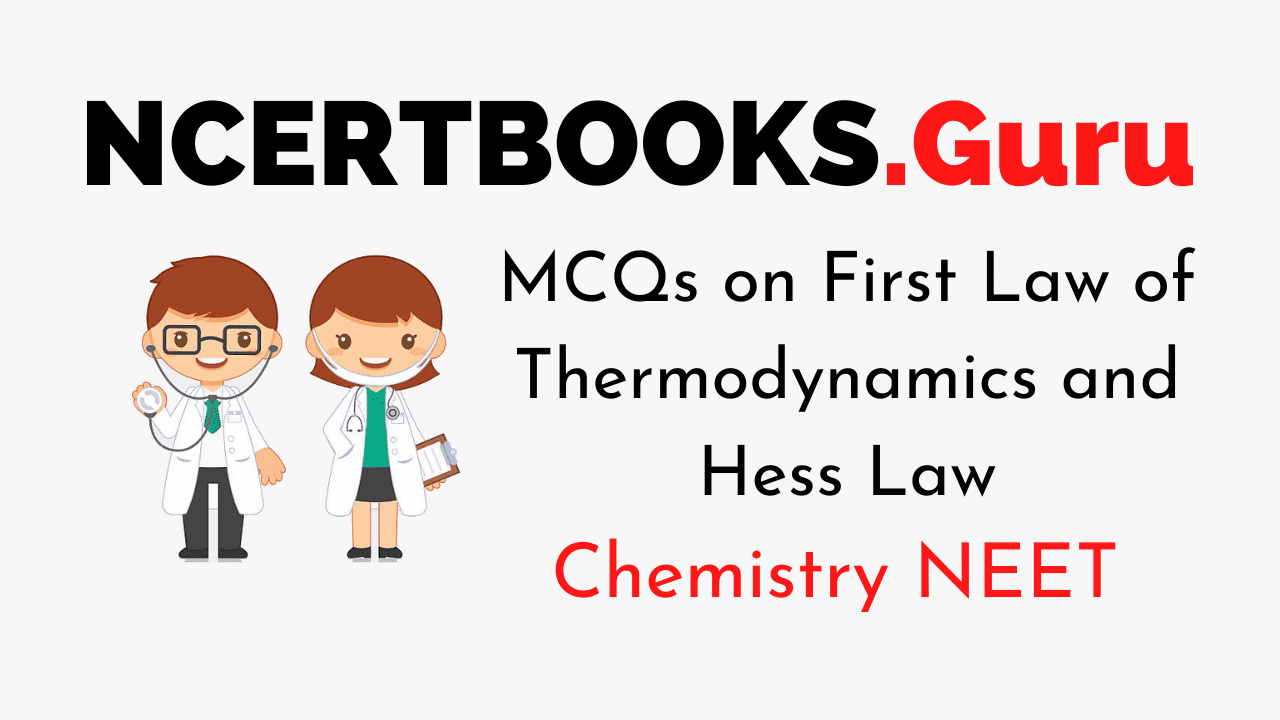NEET Chemistry is the scoring paper in the medical entrance examination. Here, you will discover the NEET Chemistry MCQ Questions for all Concepts as per the latest syllabus. Practice more on a regular basis with these NEET Chemistry objective questions on air pollution and improve your subject knowledge & problem-solving skills along with time management. NEET Chemistry First Law of Thermodynamics and Hess Law Multiple Choice Questions make you feel confident in answering the question in the exam & increases your scores to high.
MCQs on First Law of Thermodynamics and Hess Law
1. The variations in enthalpy that can not be detected per calorimeter can be detected with the aid of
(a) Newton’s law
(b) Hess’s law
(c) Krebs law
(d) Ohm’s law
Answer
Answer: (b)
2. The energy required to sever a given covalent bond is named
(a) bond energy
(b) bond enthalpy
(c) bond dissociation energy
(d) all of above
Answer
Answer: (d)
3. Changes in enthalpy in an exothermic reaction is
(a) positive
(b) negative
(c) constant
(d) neutral
Answer
Answer: (b)
4. The first law of thermodynamics states that energy can not be
(a) created only
(b) destroyed only
(c) converted
(d) created and destroyed
Answer
Answer: (d)
5. Hess’s law states that a chemical reaction is independent of the route by which chemical reactions takes place while keeping the same
(a) initial conditions only
(b) final conditions only
(c) mid-conditions
(d) initial and final conditions
Answer
Answer: (d)
6. The standard enthalpy change of neutralization involves the reaction of an acid with an alkali to form 1 mol of
(a) water
(b) oxygen
(c) nitrogen
(d) anhydrous salt
Answer
Answer: (a)
7. The change in the energy between a chemical reaction and the surroundings at constant temperature is called
(a) enthalpy change
(b) enthalpy
(c) enthalpy profile
(d) dynamic enthalpy
Answer
Answer: (a)
8. To initiate a reaction the minimum energy which is required to break bonds is called
(a) bond energy
(b) activation energy
(c) breaking energy
(d) ionization energy
Answer
Answer: (a)
9. The standard condition for enthalpy changes are
(a) the pressure of 100 kPa
(b) temperature 298K
(c) normal physical state
(d) all of above
Answer
Answer: (d)
10. The application of law of thermodynamics to the enthalpy change was done by
(a) Newton
(b) Hess’s
(c) Lewis
(d) Sophocles
Answer
Answer: (b)
